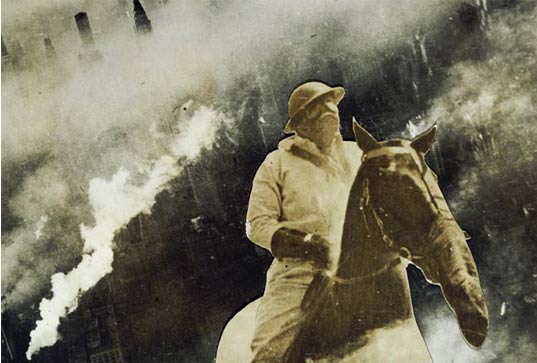THE CUT-AND-PASTE WORLD: WAR RETURNS
Just as World War I shifted central European modernism onto a new plane, particularly in photography, World War II brought that modernism to a horrific conclusion. In these years of renewed catastrophic upheaval, some artists continued to turn to photomontage. Janusz Maria Brzeski, an artist trained in avant-garde circles but working for the press, used photomontage for sensational ends; his masterful, ghastly scenes of a violent modernism teeter between trenchant critique and trivial commentary upon the crises of his day. Other artists turned during this time of renewed upheaval to photomontage only privately or in forbidden publications. Karel Teige assembled approximately four hundred photomontages for himself and his closest friends, in which he recycled popular media culture and much of the history of art; his Czech compatriot Jindřich Heisler made photomontages while hiding for more than three years to escape deportation.
What had begun as a pathbreaking means to describe the promise of modernity became, in the later 1930s and 1940s, a way to reflect upon that promise in what, for central Europe, were modernity’s twilight years.

Janusz Maria Brzeski, Twentieth-Century Idyll no. 7, 1933 (detail) - view full image
- The Cut-and-Paste World: Recovering from War
- Laboratories and Classrooms
- New Women — New Men
- Modern Living
- The Spread of Surrealism
- Activist Documents
- Land Without a Name
- The Cut-and-Paste World: War Returns

